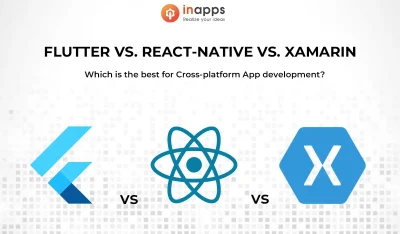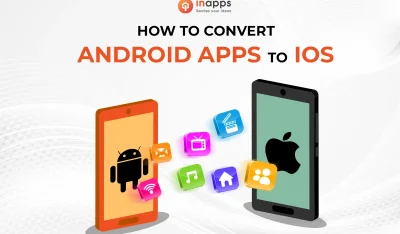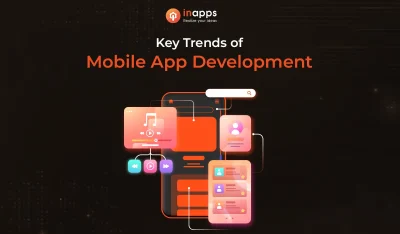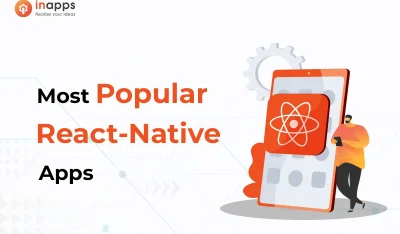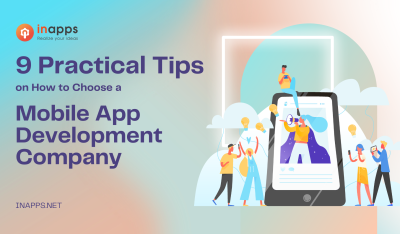- Home
- >
- Mobile apps development
- >
- What is M-Commerce? Examples, Applications, Benefits
M-commerce is growing, roaring, and not showing any signs of slowing down. Actually, it is expected that the majority of purchases will be made using mobile devices in the coming few years. Given that, many businesses have already moved to the smartphone platform to boost their revenues, opening paths for M-Commerce.
It is no hidden fact that almost everyone has a smartphone these days for ease of use, entertainment, education, and shopping etc. This has made our lives a lot easier. We can do many things on just the click of a button.
Apps like Google Pay and Apple Pay have revolutionized the way we make payments. It does have its fair share of drawbacks but still, it is a good option to go after and it’s improving with each passing day. M-commerce can be used by businesses to improve their customer base and increase their revenue.
Since they have become our digital ID, we could use it as our wallet. With the robberies not coming to a stop, it has almost become a headache to carry cash with yourself. Due to this, the need for mobile wallets or cashless transactions is increasing each passing day. This has lead to a rise in mobile commerce.
In this article, we are going to discuss M-commerce, its types and advantages, and how it’s going to affect us in the future.
Let’s start-
What is M-Commerce?

M-Commerce, short for Mobile Commerce, is a branch of commerce that deals with the digital transactions made from the smartphone. It doesn’t require physical contact between two people for sending or receiving the money.
In other words, we can say that M-commerce (mobile commerce) is the buying and selling of goods and services through wireless handheld devices such as smartphones and tablets. As a form of e-commerce, m-commerce enables users to access online shopping platforms without needing to use a desktop computer.
Examples of M-commerce –
- In-app purchasing
- Mobile banking
- Virtual marketplace apps like the Amazon mobile app or a digital wallet such as Apple Pay, Android Pay, and Samsung Pay.
- Mobile ticketing
According to Wikipedia, the term mobile commerce was originally coined in 1997 by Kevin Duffey at the launch of the Global Mobile Commerce Forum, to mean “the delivery of electronic commerce capabilities directly into the consumer’s hand, anywhere, via wireless technology.”
Types of M-Commerce
M-commerce can be categorized by function as either mobile shopping, mobile banking or mobile payments. Mobile shopping allows for a customer to purchase a product from a mobile device, using an application such as Amazon, or over a web app.
A subcategory of mobile shopping is app commerce, which is a transaction that takes place over a native app. Mobile banking includes any handheld technology that enables customers to conduct transactions.
This is typically done through a secure, dedicated app provided by the banking institution. Mobile payments enable users to buy products using a mobile device. Digital wallets, such as Apple Pay, allow a customer to buy a product without needing to swipe a card or pay with physical cash.
M-Commerce is a vast field which doesn’t end at buying a commodity online- it includes all the behaviors related to checking any stuff online from your smartphone.
The different types of Mobile Commerce are-
1. Browsing for stuff online on your mobile – This type deals with surfing for stuff online like looking for Groceries, Daily essentials, and electronics. We’re talking about dedicated apps, optimized websites, or even social media platforms like Facebook or Instagram that allow in-app purchases or linking to online stores.
2. Purchasing app-delivery stuff (Food delivery or e-commerce apps) – This type deals with the services related to ordering things like food, cab pickup, and others.
3. Mobile banking – Mobile banking is the method that involves accessing the features of the bank using online methods. The transactions are made from specific apps designed by apps, though some financial services companies are now experimenting with chatbots or messaging apps to deliver customer service.
4. Mobile App payments(Google Pay or PayPal) – This type primarily focuses on making payment transactions through apps. The user is required to register their credit or debit card and then use it whenever they want.
5. Purchasing or renting digital content (Netflix, Spotify, etc) on a mobile device – This involves buying or renting online services like Music Streaming, Video Streaming, or commodity-based on a rent basis.
6. Mobile person-to-person payments(Venmo or Xoom) – This type involves sending money from one person to another, be it for buying stuff or sending it to someone in need. This type of transaction can be made by sending money to someone’s number or to their bank account directly.
How Mobile Commerce Works?

With most m-commerce enabled platforms, the mobile device is connected to a wireless network that can be used to make online product purchases. For those in charge of developing an M-commerce application, important KPIs to monitor include the total mobile traffic, the total amount of traffic on the application, average order value, and the value of orders over time.
Similarly, tracking the mobile add to cart rate will help developers examine, if visitors are becoming customers. M-commerce developers may also be interested in logging average page loading times, mobile cart conversion rates and SMS subscriptions.
In terms of mobile payment products, they operate through a form of peer-to-peer (P2P) sharing. Once a mobile device is paired with a bank card’s information, the phone can be waved over a payment terminal to pay for a product. This contact less payment via a mobile device is feasible due to the use of Near Field Communication(NFC).
What are the most important m-commerce applications
Mobile commerce has entered into all spheres of our daily lives like- finance, retail, telecommunication, healthcare, information technology, sales and services. Need for M-commerce has increased multi-fold in recent times because of the ease of functioning and accessibility they offer.
Some of the applications of mobile commerce are-
1. M-Commerce for finance
2. M-Commerce for Retail and After sale Services
3. M-commerce & Mobile ticketing
4. M-commerce & Mobile marketing
5. M-commerce for mobile entertainment
6. M-commerce for hotel reservations
7. M-commerce for Healthcare & Medicine
8. M-commerce for Information
9. M-commerce for Gaming
10. M-commerce for Intra-office communication
Advantages of M-Commerce

Advantages of M-Commerce are-
- Increases the amount of customer retention by being easily accessible to them
- Wider variety of commodities and services
- More options for selecting the product
- Convenient for the consumer to compare the pricing, product reviews, and making purchases without the use of a computer.
- Multiple options for payments like the credit card and debit card payments,
- Better user experience
Disadvantages of M-Commerce
Disadvantages of M-Commerce are-
- The technology required to set up M-commerce at the moment is very expensive. The initial cost to begin a business is very high.
- In developing countries, the network signal is not very good and the providers are not capable of providing good speed. Due to this, it is not suitable for data transfer.
- There is a risk of security- Although it is quite safe these days, there is always a chance of data leaking and intrusions.
- A poorly designed app can lead to lesser number of purchases because of customer dissatisfaction.
- Mobile payment is still not available across many locations in the world.
Future scope of M-Commerce
M-Commerce is rapidly expanding in today’s time. Everyone is busy and they don’t have the time or energy to go to the market and buy stuff for them. Instead, they prefer ordering from their home itself. The biggest trend for M-Commerce is its market share/ growth. M-Commerce spending in 2018 was calculated at $501 Billion and it is expected to grow more to $740 Billion by 2023.

Major Trends for M-Commerce indicating Great Future Scope-
- The mobile wallet market will grow to $5.3 trillion by the end of 2020 – Mobile wallets have made our life easier by reducing the hassle of carrying a wallet with us everywhere. It offers the convenience of making as many transactions we want by just storing our credit or debit card details just once. A proof of this trend is the fact that the market size of mobile wallets has grown from $1.65 Trillion to $5.3 Trillion between 2013 and 2020.
- M-Commerce market will see new contenders between 2020 and 2025 – Currently, the payment markets are captured by old players like PayPal, Google, Apple, and SAP. But in the coming years, you can see the increase in the number of new contenders capturing the majority amount of market share. They will bring more opportunities for customers and share the market share more uniformly.
- The mobile commerce revenue is expected to hit $3.56 Trillion by 2021 – The revenue generated has been increasing with each passing year and will touch $3.56 trillion by 2021. This is proof of the increasing demand for mobile-based shopping.
M-Commerce Key Statistics & Insights-
To help you understand the potential of mobile commerce, check these insights and key statistics:
- 96% of Americans own a cellphone.
- 8 out of 10 Americans shop on their Mobile devices.
- Mobile commerce is expected to outgrow non-mobile commerce in 2021.
- Mobile digital advertising spend is double that of desktop advertising spend—$71 billion was spent on mobile advertising in 2018, while only $37 billion was spent on desktop.
- On Black Friday of 2018, 66% of shopping was done on mobile devices.
- In 2021, mobile commerce sales will account for more than half of total e-commerce sales.
- Today, one-third of purchasing decisions is influenced by researching products on mobile devices.
- More than half of retailers already have a mobile app and over 50% of the rest is going to build one soon.
- In mid-2019, mobile e-commerce spending in the United States reached a smashing $41.2 billion.
- The total number of US-based shoppers who make mobile purchases will reach 168.7 million.
- The volume of mobile commerce sales will be more than double between 2017 and 2020, reaching $ 336 billion this year.
Source: InApps.net
Let’s create the next big thing together!
Coming together is a beginning. Keeping together is progress. Working together is success.







